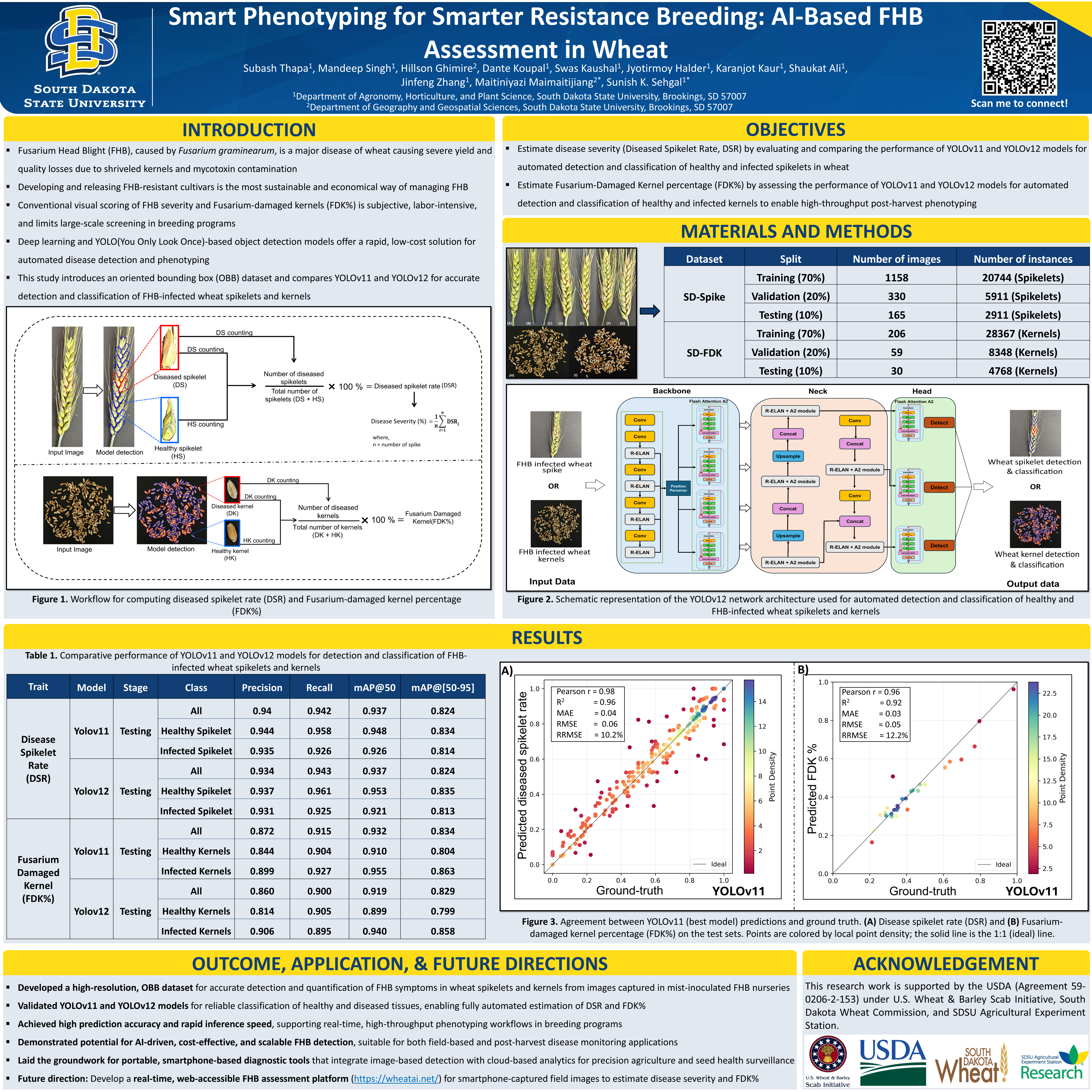Authors: Subash Thapa1, Mandeep Singh1, Hillson Ghimire2, Dante Koupal1, Swas Kaushal1, Jyotirmoy Halder1, Karanjot Kaur1, Shaukat Ali1, Jinfeng Zhang1, Maitiniyazi Maimaitijiang2, Sunish K. Sehgal1
1. South Dakota State University, Department of Agronomy, Horticulture and Plant Science, Brookings, SD
2. South Dakota State University, Department of Geography and Geospatial Sciences, Brookings, SD
Corresponding Author: Sunish K. Sehgal, Sunish.Sehgal@sdstate.edu and Maitiniyazi Maimaitijiang, Maitiniyazi.Maimaitijiang@sdstate.edu
Presenting Author: Subash Thapa
Abstract
Fusarium head blight (FHB), caused primarily by Fusarium graminearum, is a major fungal disease of wheat that reduces grain yield and quality and contaminates grain with mycotoxins. Accurate and scalable phenotyping of FHB severity and Fusarium-damaged kernels (FDK%) is critical for resistance breeding but remains constrained by subjective, labor-intensive visual scoring. In this study, two state-of-the-art deep learning models, YOLOv11 (You Only Look Once) and YOLOv12, were implemented using an oriented bounding box (OBB) annotated dataset to automate the detection and classification of healthy and infected spikelets and kernels from high-resolution RGB images. A large-scale benchmark dataset, the SD-FHBSD and SD-FDKD, was developed containing precisely annotated spikelet- and kernel-level images collected from a 2024 FHB screening nursery. YOLOv11 achieved superior detection and classification performance, with mAP@0.5 (mean average precision) values of 0.937 for spikelets and 0.932 for kernels, and the fastest inference time (9.5 – 14.2 ms per image), supporting real-time phenotyping applications. For FHB severity estimation, YOLOv11 achieved an R² of 0.96 with the lowest RMSE (0.06) (Root Mean Square Error), while for FDK%, it achieved an R² of 0.92 and an RMSE of 0.05, outperforming YOLOv12. The incorporation of brightness-based augmentation further improved robustness across various lighting conditions. The integration of OBBs enabled more precise localization of tilted and overlapping spikelets, enhancing detection accuracy compared with conventional axis-aligned boxes. This study introduces the first OBB-based FHB dataset and demonstrates an efficient, low-cost, and scalable framework for automated FHB disease severity and kernel damage estimation, paving the way for AI-driven, real-time phenotyping and precision disease monitoring in wheat breeding programs.

